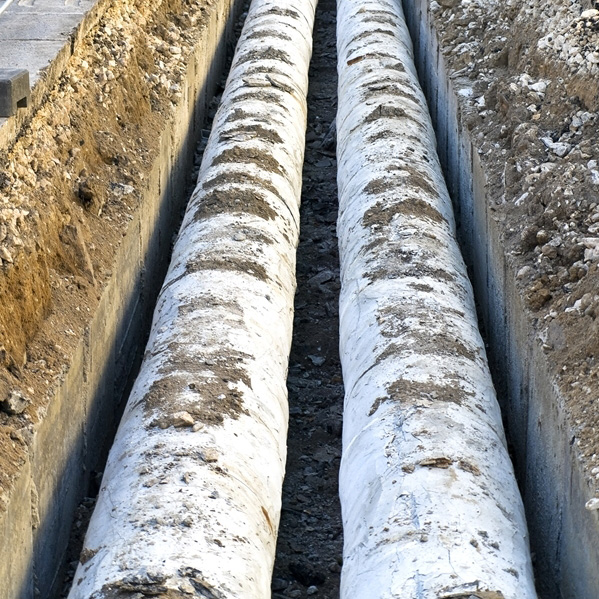Industrial waste account to boost industrial symbiosis

Industrial waste account to boost industrial symbiosis
National industrial waste input-output accounts are a great asset to uncover waste exchange opportunities, reduce industrial wastes and promote industrial symbiosis at a national scale.
Original Paper:
Chen, P.-C. and Ma, H.(2015), Using an Industrial Waste Account to Facilitate National Level Industrial Symbioses by Uncovering the Waste Exchange Potential. Journal of Industrial Ecology. DOI: http://dx.doi.org/10.1111/jiec.12236
The field of industrial ecology (IE) places great value on waste streams. Industrial wastes from one industry can be input materials for other industries. Identifying different industries for such waste exchanges can be challenging. Industrial symbiosis (IS) refers to a cluster of industries situated closely that share utilities and exchange byproducts. Many studies of industrial symbiosis to date have focused on potential material exchanges at smaller scales, such as within industrial parks. However, if the scope of such studies is to be expanded beyond limited geographical areas, many opportunities for byproduct or waste exchanges may be uncovered.
Large-scale industrial symbiosis looks at the potential material exchanges across different towns, states, and regions. This assists in identifying supply and demand opportunities for industrial wastes that don't exist locally. In this way, material synergies of more diverse natures can be identified. It also enables more industries to participate. However, there is no formal method or framework to identify industrial symbiosis opportunities at such large scales. A study published in the Journal for Industrial Ecology proposes a methodology to analyze large-scale material flow networks for potential material exchanges. Authors suggest that this methodology could be used to identify existing byproduct synergies, the resiliency of existing networks based on the diversity of byproduct exchanges, and potential for future IS synergies.
To illustrate the application of the method, the authors use Taiwan's national industrial waste data from 2006. The data, obtained from Taiwan's Environmental Protection Agency, includes data from 30,000 firms. The data was rearranged into "waste input-output" (WIO) tables in which byproduct output industries were matched with input industries. Non-waste inputs, waste inputs, waste outputs, and product outputs were also identified. (Energy, water, and steam transfer data were excluded due to data unavailability.)
Using data mining methods and material flow analyses existing the researchers determined material exchange synergies. The existing national industrial symbiosis network was plotted, within which three smaller IS networks were identified. The authors estimate network resiliency by identifying the number of source and receiving points for each waste. A system is not considered resilient if the waste is sourced or received by few industries. The composition of each byproduct was checked and compared with the virgin material composition. This was done to find opportunities to replace virgin materials with the byproducts as industrial inputs.
The study revealed that 23 byproducts were highly reused. The reuse capacities of these byproducts were evaluated across the national network. The byproducts' production within the smaller IS networks was much larger than the input capacities in these small networks. Therefore the reuse capacities within the smaller IS networks were much lower than the reuse capacities in the national network. Few commonly used byproducts with strong demands were found to have insufficient supplies. Such instances in which the byproduct supply is lower than its demand presents an opportunity to explore reuse capacities outside the smaller IS network. Some byproducts were reused completely within the same industry. Byproducts with no demand were disposed of as wastes or exported for the production of secondary materials. In some cases lack of information about the availability of byproducts hindered the reuse of byproducts. Variation in flow rate was another important factor considered for analyzing the network, as industries typically need a steady supply of raw materials to operate efficiently.
As the study shows, industrial symbiosis at larger scales has much larger potential for byproduct reuse. For effective use of resources at larger scales WIO tables can be used to uncover byproduct synergies. Material flow analysis of major byproducts can be used to identify the emerging patterns for effective planning of IS synergies. Industries with high reuse capacities must be targeted foremost. The network maps of the existing networks can be used by facilities that are not currently a part of the IS system to formulate strategies to reuse or supply byproducts. For products which cannot be directly reused in industries but need prior processing to be used further, new processing units can be set up to make them reusable, as the authors suggest. Overall, national industrial waste input-output accounts are an effective path to determine opportunities for industrial symbiosis and to manage resources more efficiently.




